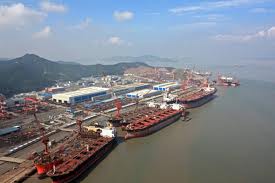
The first container ship arrived at the Port of Charleston in 1966. It was carrying the equivalent of 600 20-foot-long steel boxes loaded with an assortment of goods.
Thirty years later, Maersk Line built the Regina, the world’s largest container ship at the time. It was designed to haul the equivalent of 6,000 20-foot-long containers.
The Regina, half a football field longer than the aircraft carrier USS Yorktown at Patriots Point, caused quite a stir when it first called on Charleston in 1998, but now it hardly stands out at all on the local waterfront.
“Today, we have four ships a week bigger than that one,” said Byron Miller, vice president for marketing, public relations and planning for the S.C. State Ports Authority.
A recent example: Just 10 days ago the MSC Charleston, all 1,065 feet of her, docked at Wando Terminal ferrying more than 8,000 20-foot-equivalent units, or TEUs.
That, in essence, is what the fuss over the Charleston Harbor deepening project is all about: Container ships keep getting bigger and bigger, and they need increasingly deeper navigation channels so they can get in and out of ports without running aground.
A more than $5 billion project to widen and deepen the Panama Canal will allow so-called post-Panamax ships to bring cargo from Asia across the Pacific to the East Coast, rather than going to ports on the West Coast and shipping the containers over land by truck or rail.
Currently, the post-Panamax ships carrying 5,000 TEUs or more travel to Charleston across the North Atlantic, or via the Suez Canal.
Ships the size of the MSC Charleston and larger are expected to become the East Coast standard, rather than the exception, when the expanded Panama Canal is ready to accommodate them in 2014.
Last year, no ship carrying 8,000 or more TEUs called on Charleston.
This year, the port said, it is averaging three such vessels each week. But they must arrive and depart at high tide because those ships require water nearly 48 feet deep.
The shipping channel now has a federally authorized depth of 45 feet, and it’s routinely dredged to about 47 feet to keep ahead of the silting that reduces depth over time, according to the U.S. Army Corps of Engineers. The work to make the channel 45 feet deep was completed not that long ago, in 2004.
Getting to 50
This morning, the SPA and the U.S. Army Corps of Engineers will sign an agreement that starts the ball rolling on the deepening of the Charleston shipping channel, a project expected to take a decade or longer, with construction costs estimated at $310 million if the depth is changed to 50 feet.
The SPA wants the channel deepened to 50 feet, so that post-Panamax ships can come and go without relying on the tides.
The difference from the current depth, 5 feet, may not sound like much, but getting there could take, according to the Army Corps, between 10 and 13 years.
The agreement set for signing this morning will begin a feasibility study phase that should last five to eight years, the Army Corps estimates, so long as the federal government continues to provide necessary funding.
Ports up and down the eastern seaboard, and in the Gulf of Mexico, are all scrambling to deepen their shipping lanes, and in some cases build higher bridges, in order to handle the larger ships.
More info: Postandcourier
By David Slade
We use cookies to improve your experience. By continuing to use our site, you accept our Cookies, Privacy Policy,Terms and Conditions. Close X